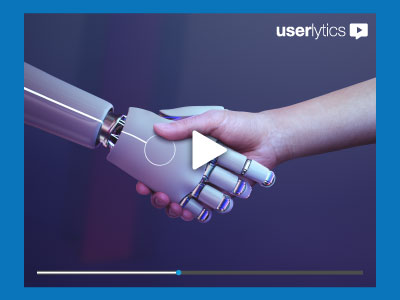How can you know if your website, app, or prototype is easy to use? Assumptions and expert opinions have their limits. Usability Testing is a key User Experience (UX) research method that answers this question. It evaluates a product’s ease of use through observation. Researchers watch real users as they try to complete specific tasks with the product or prototype. They note user behaviours, successes, challenges, and feedback. The main goal is to find usability issues, see how users interact with the interface, and collect insights to enhance the user experience before or after launch.
What is Usability Testing?
At its core, usability testing is about observing behavior. Instead of just asking users if they think something is easy to use, you watch them try to use it to accomplish specific goals. This direct observation is incredibly powerful because it reveals discrepancies between how a product is intended to be used and how it’s actually used in practice.
Key principles include:
- Focus on Tasks: Users are given realistic tasks to complete, simulating actual product usage. (See our article on Usability Tasks).
- Representative Users: Participants should reflect the actual target audience for the product. (See our article on Participant Recruitment).
- Observation: Researchers carefully watch users’ actions, including navigation paths, clicks/taps, hesitations, errors, and non-verbal cues (where possible).
- Think-Aloud Protocol (Often): Participants are often encouraged to verbalize their thoughts and feelings as they work through tasks, providing crucial insights into their reasoning and expectations. (See our article on Think-Aloud).
- Goal: Identify Problems: The primary aim is usually to uncover usability barriers – points where users struggle, get confused, or cannot complete their goals efficiently.
- Testing the Product, Not the User: It’s crucial to create an environment where the participant feels comfortable and understands that the product is being evaluated, not their personal ability.
Usability testing can be conducted at various stages – with early paper prototypes to validate concepts, interactive wireframes to test flows, high-fidelity prototypes to refine interactions, or live products to identify issues in the wild or benchmark performance.
Key Components of Usability Testing
Regardless of the specific format (moderated/unmoderated, remote/in-person), most usability tests share common essential components:
- Representative Participants: Individuals recruited because they match the target user profile.
- Realistic Usability Tasks: Clearly defined, goal-oriented activities for participants to perform.
- The Product or Prototype: The specific interface being evaluated.
- A Facilitator/Moderator (for Moderated Tests): Guides the session, introduces tasks, observes, and probes for feedback in real-time.
- A Testing Environment/Platform:
- In-Person: Often a usability lab with observation capabilities. (See our article on Usability Lab).
- Remote: Utilizes technology to connect the participant and researcher (if moderated) or to record the participant’s independent session (if unmoderated). Userlytics is a leading platform specifically designed for conducting comprehensive remote usability tests.
- Data Collection Mechanisms: Tools and techniques to capture user behavior and feedback:
- Direct Observation (live or via recording).
- Screen Recording.
- Audio Recording (especially for think-aloud).
- Webcam Recording (for facial expressions).
- Quantitative Metrics (Task Success, Time on Task, Error Rate – often captured via the platform like Userlytics).
- Post-Task/Post-Session Questionnaires (e.g., SEQ, SUS, satisfaction ratings – also often managed via the platform).
- Systematic Analysis: A process for reviewing the collected data (recordings, notes, metrics) to identify patterns, synthesize findings, prioritize issues, and generate actionable recommendations.
Why Usability Testing is a Must-Have in UX Research
Conducting usability testing is one of the most impactful activities a product team can undertake:
- Uncovers Real-World Problems: Reveals issues that designers, developers, and product managers, with their inherent biases and expert knowledge (“curse of knowledge”), often miss. It shows where actual users struggle.
- Provides Actionable Design Insights: Generates specific, concrete examples of usability barriers, leading directly to targeted and effective design improvements.
- Validates Design Concepts and Decisions: Offers empirical evidence confirming whether design solutions work as intended in the hands of real users.
- Reduces Development Risk and Costs: Identifying and fixing usability issues during the design phase or before widespread release is vastly cheaper and less damaging than addressing them post-launch based on negative reviews or support calls.
- Builds Critical Empathy: Watching users interact with a product, especially witnessing their struggles, is incredibly effective at building empathy and shared understanding across the entire development team and among stakeholders.
- Improves User Satisfaction and Retention: By removing friction and making products easier to use, usability testing directly contributes to higher user satisfaction and reduces the likelihood of users abandoning the product.
- Drives Iterative Improvement: Provides the essential user feedback loop required for effective iterative design, allowing teams to refine designs based on observed behavior.
Benefits and Considerations of Usability Testing
Usability testing provides immense value, but like any research method, it involves practical considerations:
Benefits:
- Direct observation yields rich insights into actual user behavior.
- Highly effective at identifying specific, actionable usability problems.
- Generates compelling qualitative data (‘why’) alongside quantitative metrics (‘what’).
- Powerfully builds empathy and user-centricity within teams.
- Validates designs with real users before costly development.
- Applicable across various stages of the product lifecycle.
- Reduces long-term costs associated with support and rework.
Considerations & Challenges:
- Resource Investment: Requires planning time, participant recruitment effort (and incentives), session time (especially moderated), and dedicated analysis time. (Remote platforms like Userlytics significantly improve efficiency but resources are still needed).
- Requires Skill: Designing effective tasks, moderating sessions neutrally, and analyzing findings rigorously requires UX research expertise.
- Potential for Artificiality: Participants know they are being observed, which might slightly alter their natural behavior (though remote testing in their own environment mitigates this compared to labs).
- Recruitment Challenges: Finding and scheduling truly representative participants can sometimes be difficult, especially for niche audiences (though platforms like Userlytics with global panels alleviate this).
- Limited Generalizability (Qualitative Focus): Findings from typical small-sample qualitative tests identify potential issues but don’t statistically prove their frequency in the broader population (quantitative testing with larger samples addresses frequency).
- Focus on Usability: Primarily evaluates ease of use and task completion, not necessarily desirability, market need, or overall product strategy (other research methods address those).
The Enduring Value of Usability Testing
Usability testing is a key method in UX research. It provides insights into how easily users interact with a product. Teams can watch real people do real tasks. This helps them find usability issues, learn about user behavior, and collect feedback to improve experiences.
Usability testing can be done in person or remotely. More often, teams use platforms like Userlytics for this. These platforms support both moderated and unmoderated studies worldwide. They capture valuable behavioral and verbal data. This testing provides essential evidence to support design choices and drive ongoing improvements. It links design intentions with actual user experiences.
Regular usability testing goes beyond finding issues. It shows a commitment to user-centred design. This ensures products are functional, usable, efficient, and enjoyable for users.



